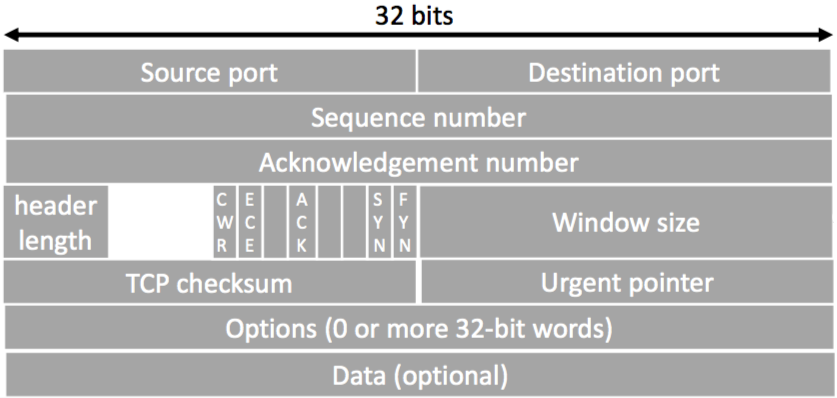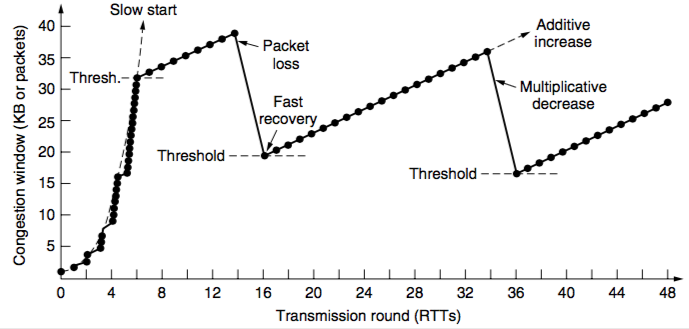Computer Networks
Table of Contents
Transport: internet transport protocols
Internet transport protocols UDP (User Datagram Protocol)
-
very thin layer on top of IP
-
provides: ports
-
does not provide: flow/congestion control, retransmissions
-
header format:

TCP (Transmission Control Protocol)
-
provides reliable end-to-end byte stream (so applications can’t tell how many segments or packets were sent)
-
header format:

- every data byte has its own sequence number
- window size — how much data receiver can handle, with small values leading to huge overhead
- congestion control
- congestion window is on sender, specifying how many segments can be transmitted.
- increase congestion window whenever ACKs arrive, until they don’t.
- then set slow start threshold to half of congestion window and start again.
- when threshold is crossed, switch to additive increase
- fast retransmission — three duplicate acks imply lost packet, whose identity can be infered from ack number (it’s the next packet in sequence). this packet is retransmitted right away
- in TCP Reno:
